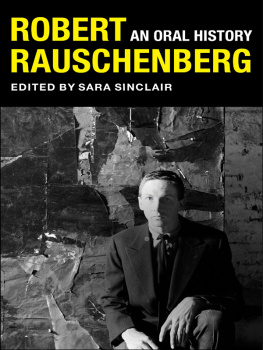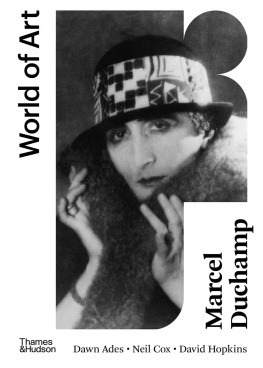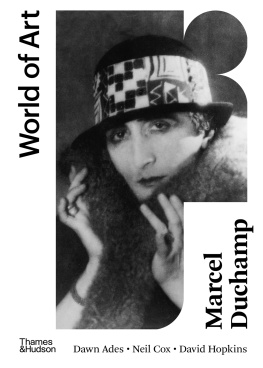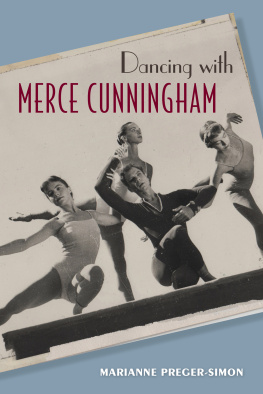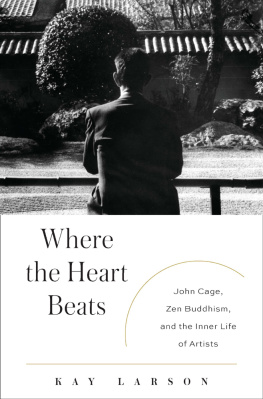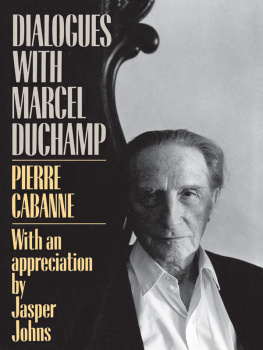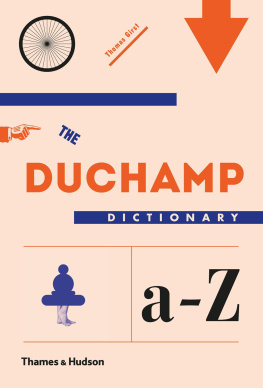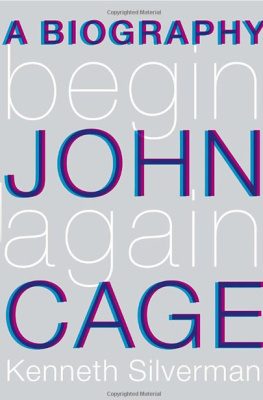the Bride and the
Bachelors
Calvin Tomkins
Titles By Calvin Tomkins
Intermission (novel)
The World of Marcel Duchamp, 1887
Eric Hoffer: An American Odyssey
The Bride and the Bachelors
Living Well Is the Best Revenge
Merchants and Masterpieces: The Story of the Metropolitan Museum of Art
The Other Hampton (with Judy Tomkins)
The Scene: Reports on Post-Modern Art
Off the Wall: Robert Rauschenberg and the Art World of Our Time
Post- to Neo: The Art World of the 1980s
Alex: The Life of Alexander Liberman (with Dodie Kazanjian)
Duchamp: A Biography
Lives of the Artists
Marcel Duchamp: The Afternoon Interviews
the Bride and the
Bachelors
Calvin Tomkins
Marcel Duchamp
John Cage
Jean Tinguely
Robert Rauschenberg
Merce Cunningham
Jasper Johns
Gagosian, New York
Published by Gagosian Gallery 980 Madison Avenue New York, NY 10075
First published in the United States of America by Viking Penguin Inc. 1965. Published in Great Britain by Weidenfeld & Nicolson 1965. Viking Compass Edition with a new Introduction and expanded text published 1968. Reprinted 1969, 1970, 1971, 1972, 1973, 1974 (twice), 1975. Published in Penguin Books 1976. Copyright Calvin Tomkins, 1962, 1964, 1965, 1968, 2013
All rights reserved. No part of this publication may be used or reproduced in any form or by any electronic, mechanical, or other means, now known or hereafter invented, including photocopying and recording, or in any information retrieval system, without written permission from the copyright holders. For information, please contact the gallery.
Project director: Valentina Castellani
Publication director: Alison McDonald
Project manager: Andie Trainer
Gagosian Gallery coordinators: Darlina Goldak, Andres Hecker, Melissa Lazarov, and Victoria Rogers
Proofreader: Susan Richmond
Cover design from Marcel Duchamp, Preparatory Study for the Figure in tant Donns, c. 1950 (courtesy Philadelphia Museum of Art), Succession Marcel Duchamp/ADAGP, Paris/ Artists Rights Society (ARS), New York 2013
To G.M. and S.W.M.
encore cet astre
Contents
Note
The continuing interest in this book has been a pleasant surprise. When it first appeared, in 1965, John Cage, Jean Tinguely, and Robert Rauschenberg were relatively unfamiliar names to many of its readers, and outside of what was then a very small art world, Marcel Duchamp had been largely forgotten. Re-reading the profiles in the second (1968) edition, which was expanded to include Merce Cunningham, what strikes me now is my own uncritical excitement over the aesthetic revolution that their work represented. At the time, I remember thinking this must have been what it felt like to be in Paris in the 1920s, when Dada, Surrealism, and Diaghilevs Ballets Russes were re-directing the energies of the modern movement.
Although the differences among my five subjects were as important as the connections, they shared certain ideas and attitudes that would soon become profoundly influential: ideas of an art based not on self-expression or heroic individualism or some concept of the sublime, but on a field of aesthetic possibilities reachable through unorthodox means such as chance, experimentation, and the unapologetic embrace of everyday experience. All this was news to me in 1959. I knew next to nothing about contemporary art then, but one day, quite by chance, I was assigned by an editor at Newsweek, where I worked on the Foreign News desk, to interview Marcel Duchamp, and that encounter changed my perspective on art, life, and a good many other questions. In 1961 I began writing profiles of contemporary artists for The New Yorker, and I have been doing so ever since.
As time went on, and The Bride and the Bachelors continued to stay in print, it became increasingly clear that one artist was conspicuously absent: Jasper Johns. Over the next three decades I tried several times to persuade Johns to sit for a profile; each time, he said he would think about it, and then declinedelegantly but firmly. The third time, as I recall, his reason was that he simply had nothing to say. Johns finally relented in 2005, and his inclusion in this new edition, where he says quite a bit, is accompanied by a long sigh of authorial relief.
The six profiles are reprinted just as they appeared in The New Yorker, with a few minor corrections. There was another gap in the previous editions, however, and it is too large not to mention here. Six months after Duchamps death in 1968, his last major work, constructed in total secrecy over a period of twenty years (19461966), went on view in a room of its own at the Philadelphia Museum of Art. Called tant donns: 1 la chute deau, 2 le gaz dclairage (Given: 1. The Waterfall, 2. The Illuminating Gas), it came as a shock to everyone, including me. (Nothing he had said in our conversations alluded to it.) Installed behind an ancient wooden door and visible by one person at a time through a pair of eye-level peepholes in the wood, tant donns is a three-dimensional tableau vivant of a blatantly realistic nude woman lying on a bed of dry leaves, her legs spread apart, her head hidden from sight, one arm holding aloft an old-fashioned gas lamp. The background is a picture-postcard landscape of woods, a lake, blue sky, and a tiny trompe loeil waterfall that sparkles in the sun. To many of Duchamps most ardent admirers, it was inexplicableJasper Johns called it the strangest work of art in any museum. Some found it a vulgar parody, a pornographic peep show, the antithesis of everything he had ever done, but others disagreed, and the many ways in which this piece seemed to deny or contradict his previous work fascinated Cage, Rauschenberg, and Johns. Instead of blurring the distinctions between art and life, as they had sought to do, tant donns seemed to insist on a complete separation. Duchampian irreverence, which had knocked art from its pedestal and freed it for himself and everyone else, had taken him in this last work to another place, whose topography we are still trying to fathom.
Well, as Cage concluded, only a great body of work could include such an extreme reversal. More than the others, Cage reveled in Duchamps affinity for self-contradiction. I cant get along without Duchamp, he once said. I literally believe Duchamp made it possible for us to live as we do.
Calvin Tomkins
January 2013
Introduction
Art has a way of undermining all aesthetic theories. This is particularly apparent today, when artists seem less and less inclined to work within established traditions and more and more drawn to explore the protean nature of art itself, to raise more questions than they solve, and generally to becloud the fantasysometimes delightful and sometimes notof art history. In suggesting that there may be elements of a common design underlying the work of the artists discussed in this book, it should be understood that I do not wish to entangle anyone in my design, least of all the subjects themselves.
Marcel Duchamp, John Cage, Jean Tinguely, Robert Rauschenberg, and Merce Cunningham do not constitute a movement or a school, nor do they even share a common point of view. Cage, the composer, and Cunningham, the modern dancer and choreographer, have worked in close collaboration for many years, and yet the intellectual rigor with which Cage charts his aesthetic course is quite foreign to Cunninghams more instinctive way of working. The element of destruction that is central to Tinguelys approach crops up only rarely in the other four. Although Duchamps infinitely subtle play of ideas has obvious reverberations in the ideas of all the others, none of them has been directly influenced by Duchamp (their discovery of him served rather to reinforce ideas arrived at independently), and none of them shows much of his ironical detachment. Granting each man his uniqueness, though, it seems to me that there is a natural affinity in their basic attitudes toward art, toward life, and toward what Rauschenberg has called the gap between the two.
Next page

